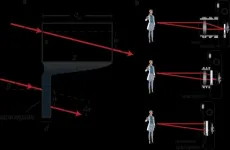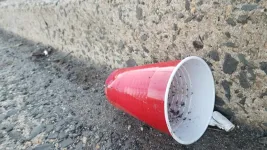Treatment for ischemic stroke, a blockage in an artery that supplies blood to the brain, restores blood flow to the brain. Rapid treatment is essential to reduce disability. Blood flow may be reestablished by administering intravenous clot-busting medication within 4.5 hours after the onset of stroke symptoms and ideally within one hour after hospital arrival. All certified stroke centers offer treatment with clot-busting medication as well as being staffed by medical professionals trained in stroke care and employ other measures to improve stroke care .
"Every day, those of us who treat stroke face the reality that our desire to help everyone competes with the fact that millions of Americans cannot reach us in time," said senior study author Akash Kansagra, M.D., M.S., associate professor of radiology, neurological surgery and neurology at Washington University School of Medicine in St. Louis. "Stroke patients have a much better chance of recovery if they can get to a stroke hospital quickly. The question we wanted to address was whether certain Americans have to travel farther than others to receive the expertise that might save them if they have a stroke."
The 2019 American Heart Association/American Stroke Association guidelines recommend stroke patients be taken by emergency medical services to the nearest stroke-capable hospital, as well as using interactive videoconferencing to provide acute stroke care, also known as "telestroke," for patients in remote settings.
The American Heart Association with the Joint Commission collaborate to provide hospitals Acute Stroke Ready Certification, Primary Stroke Certification, Thrombectomy-Capable Stroke Certification and Comprehensive Stroke Certification to qualifying hospitals.
Researchers used a public mapping service to compare the road distance to the nearest certified stroke center for each census tract (small geographic areas defined for the U.S. census) in the 48 contiguous states and the District of Columbia. For each census tract, they gathered data from the U.S. Census Bureau's 2014-2018 American Community Survey on age, race, ethnicity, medical insurance status, income and population density. The analysis covered 98% of all U.S. census tracts, which include more than 316 million people and more than 2,300 stroke-certified hospitals.
Researchers noted the longest distances to stroke-certified centers were for people living in rural areas, rural areas with more elderly people, areas where fewer people had health insurance, census tracts with lower household income levels and with greater representation of American Indians.
Specifically:
In rural areas, census tracts with more elderly residents were farther from stroke centers, with each 1% increase in people ages 65 or older representing a 0.31-mile longer distance to travel. There was no clear relationship between the density of the elderly population and distance to stroke care in urban areas. In both urban and rural areas, census tracts with a larger proportion of American Indian residents were farther from certified stroke care centers, with each 1% increase in the proportion of American Indians representing a 0.06-mile longer distance to travel in urban areas and a 0.66-mile longer distance in rural areas. In both urban and rural areas, tracts with more uninsured people were farther from stroke centers; each 1% increase in the proportion of patients that were uninsured represented a 0.01-mile longer difference to travel in urban areas and a 0.17-mile longer distance in rural areas. The relationship between income and distance to a certified stroke center was reversed between urban and rural areas. In urban areas, each $10,000 increase in median household income represented a 0.10-mile longer distance to travel. In rural areas, each $10,000 increase in household income represented a 3.13-mile shorter distance to travel. "Beyond actual differences in geographic proximity to stroke care between urban and non-urban tracts, our analysis found remarkable differences in the associations between demographic characteristics and stroke care proximity in urban and rural settings," Kansagra said.
Kansagra said it was unclear why people over age 65 in rural areas were farther from certified stroke centers, "however, the trend is unsettling. While a stroke can occur at any age, the risk is higher in older adults. It is concerning that the people most likely to experience a stroke are also more likely to live far from a stroke hospital."
Researchers said the finding that a higher income level meant a greater distance to stroke care in urban areas but a lesser distance to travel in rural areas probably reflects the concentration of wealth in suburban areas. "What surprised me was that no such reversal occurred in areas where more residents did not have health insurance," Kansagra said. "No matter where we looked, areas with low levels of medical insurance were located farther from stroke care compared to areas with high levels of insurance."
Researchers said the entities that certify stroke-capable hospitals "must continue to encourage development and certification of stroke centers in non-urban areas and emphasize return on investment in terms of health benefit to citizens rather than financial benefit to hospitals." At the same time, state governments can develop more integrated and coordinated systems of care including emergency medical services capable of rapid triage and transfer of stroke patients to the most appropriate stroke center.
The study results also reinforce the importance of knowing about the stroke care centers within your community. "Not all hospitals have the resources to provide stroke care. Patients and their families can advocate for their well-being by insisting on being taken to a qualified stroke hospital," he said.
The current study is limited by relying in part on state websites to identify stroke centers and by the inability to consider policies that may instruct emergency medical services to bypass certain hospitals. Since traffic congestion can increase travel time in certain areas, the study is also limited by having measures of distance but not travel time.
An accompanying editorial by Michael T. Mullen, M.D., M.S. and Olajide A. Williams, M.D. M.S., recognized that this study builds on previous work but it did not distinguish between primary stroke centers and comprehensive centers, which offer different levels of stroke care.
In addition, Mullen and Williams write that the distance to a stroke hospital is only one piece of a much larger series of issues: "Geographic accessibility is not the same as realized access to care and may not translate into improved stroke outcomes. ... Systematic differences in hospital characteristics related to actual performance may also influence stroke outcomes independently of distance barriers. Notwithstanding, addressing the barriers posed by physical distance to stroke centers as highlighted in this study is a necessary and important pursuit."
Kansagra and his co-researchers are currently analyzing how far Americans need to travel to receive mechanical thrombectomy, a surgical procedure used to remove blood clots in patients who suffer from severe, clot-caused stroke.
To recognize stroke symptoms requiring immediate treatment, the American Stroke Association recommends everyone remember the acronym F.A.S.T. for Face drooping, Arm weakness, Speech difficulty, Time to call 9-1-1.
According to the American Heart Association's Heart Disease and Stroke Statistics -- 2021 Update, when considered separately from other cardiovascular disease, stroke ranks No. 5 among all causes of death in the U.S. and is a leading cause of serious disability in adults. Stroke occurs when a blood vessel to or in the brain either becomes blocked or bursts, preventing blood and oxygen from reaching all of the brain.
INFORMATION:
Co-authors with Kansagra are Cathy Y. Yu, B.S.; Timothy Blaine, B.S.; and Peter D. Panagos, M.D. No disclosures were reported.
The study was funded by the National Center for Advancing Translational Sciences of the National Institutes of Health.
Additional Resources:
Multimedia is available on the right column of the release link: https://newsroom.heart.org/news/rural-residents-american-indians-travel-farthest-for-certified-stroke-care?preview=41eeb09020f9acb1c26bc54751c2e753
After June 10, 2021, view the manuscript and editorial online.
Find stroke centers in your areas
Disparities in stroke care at urban vs. rural hospitals impacts quality of care, patient survival
American Heart Association issues call to action for addressing inequities in rural health
Even short delays in the ER may reduce the lifespan of stroke survivors
Stroke deaths rise in rural areas, hold steady in cities
Why Getting Quick Stroke Treatment Is Important
Follow AHA/ASA news on Twitter @HeartNews
Follow news from Stroke, the ASA/AHA journal @StrokeAHA_ASA
Statements and conclusions of studies published in the American Heart Association's scientific journals are solely those of the study authors and do not necessarily reflect the Association's policy or position. The Association makes no representation or guarantee as to their accuracy or reliability. The Association receives funding primarily from individuals; foundations and corporations (including pharmaceutical, device manufacturers and other companies) also make donations and fund specific Association programs and events. The Association has strict policies to prevent these relationships from influencing the science content. Revenues from pharmaceutical and biotech companies, device manufacturers and health insurance providers are available here, and the Association's overall financial information is available here.
About the American Stroke Association
The American Stroke Association is a relentless force for a world with fewer strokes and longer, healthier lives. We team with millions of volunteers and donors to ensure equitable health and stroke care in all communities. We work to prevent, treat and beat stroke by funding innovative research, fighting for the public's health, and providing lifesaving resources. The Dallas-based association was created in 1998 as a division of the American Heart Association. To learn more or to get involved, call 1-888-4STROKE or visit stroke.org. Follow us on Facebook and Twitter.


